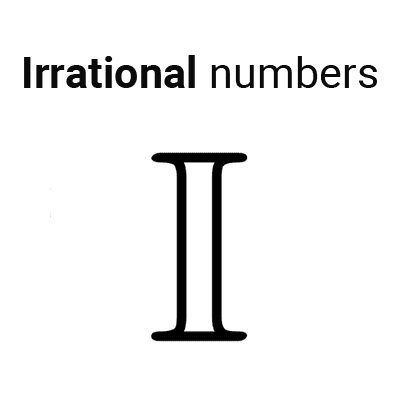
Real numbers
In this article we explain the real numbers from their concept, definition, symbology, properties and graphical interpretation. We also work with the real number system, which consists of this numerical set together with the operations that can be performed on it.
Table of Contents
What is a real number?
A real number is a type of number that corresponds to a point on the number line. Real numbers include rational numbers, which can be written as a fraction, and also irrational numbers, which cannot be expressed as a fraction.
The set of real numbers is symbolized by the letter R and is equal to the union of the sets of rational and irrational numbers:
*\mathbb{R}=\mathbb{Q}\cup\mathbb{I}*
Another way to express the set of real numbers is by using the interval that goes from negative infinity to positive infinity: *\mathbb{R}=(-\infty, +\infty)*
Real numbers are used in various areas of science and mathematics, especially in expressing continuous quantities such as length and time. The ability to represent continuous quantities accurately makes real numbers fundamental in these areas.
All natural numbers, integers, rationals, irrationals, and decimals are real numbers. This becomes more evident in the following diagram, where we can observe all numbers that compose the set of real numbers.
We have two types of real numbers: rational numbers and irrational numbers. In addition to what is seen in the graph, other examples of real numbers are:
*-27;~~\sqrt[3]{8};* *~~-\dfrac{\sqrt{2}}{2};~~\dfrac{\pi}{9};* *~~\dfrac{e^7}{\sqrt{3}};~~3.17897546;* *~~2.645751311...*
Every real number can be written in decimal form. These decimal expressions can be finite or infinite. In the case of finite decimal expressions, the decimal part has a limited number of digits after the decimal point and eventually ends. For example, the number 3.25 is a finite decimal expression, as it has only two digits after the decimal point and then stops.
On the other hand, infinite decimal expressions can be periodic or non-periodic.
- Periodic expressions follow a repetitive pattern of digits after the decimal point. For example, the number 1/3 has an infinitely periodic decimal expression: 0.333..., where "3" repeats infinitely. The number 47/11 in decimal form is 4.27272..., where "27" repeats continuously. The three dots at the end indicate that there are more digits but were not written.
- Non-periodic expressions do not follow a repetitive pattern, and the digits after the decimal point continue infinitely without a pattern. For example, the number π (pi) has an infinitely non-periodic decimal expression: 3.14159265358979...
All finite decimal expressions and infinitely periodic decimal expressions are rational numbers, whereas infinitely non-periodic decimal expressions are irrational numbers.
Properties of real numbers
The properties of the set of real numbers are:
- It is an infinite set: real numbers form an infinite set, which means there is an unlimited amount of real numbers.
- It has no first or last element: there is no real number that is smaller than all others or one that is the largest.
- It is a dense and complete set: between any two distinct real numbers, there are infinitely many real numbers. Completeness implies that there are no "empty spaces" on the real number line.
- It is a continuous set: related to the above, the continuity of real numbers refers to the absence of "jumps" on the real number line; that is, there are no gaps or breaks between real numbers.
- It is a totally ordered set: real numbers can be ordered according to their magnitude. This means that, for any pair of real numbers, one is greater than the other, or they are equal.
The real number line
The set of real numbers can be represented by a line, called the real number line. Each point on this line represents a real number, and each real number corresponds to a unique point on the line. This is called a one-to-one (or bijective) correspondence. For this reason, real numbers complete the number line.
On a line, we first choose an arbitrary point which we call the origin and associate it with the number zero. By convention, we place positive real numbers to the right of zero and negative ones to the left. Zero is neither positive nor negative. The arrow pointing to the right indicates that the numbers increase in that direction.
Given two distinct real numbers, the one furthest to the right will be greater, similarly, the one furthest to the left will be lesser. For example, from the graph, we extract that *π* is greater than *√{2}*, and at the same time, *π* is less than *23/5.*
Operations on real numbers
The set of real numbers along with the operations of addition and multiplication is called the system of real numbers. The algebraic rules for this system allow us to express mathematical facts in simple and concise forms, and solve equations to find answers to mathematical questions.
Below are the basic properties of the system of real numbers with respect to addition and multiplication. The letters a, b, c represent real numbers.
1. Closure law
When addition and multiplication operations are performed with real numbers, the results are also real numbers.
*a+b* is a real number
*ab* is a real number.
2. Associative law
The sum of three real numbers can be obtained by grouping the addends in one of two ways, and the product of three real numbers can be determined by grouping the factors in one of two ways.
*a+(b+c)=(a+b)+c*
*a(bc)=(ab)c *
3. Commutative law
The sum and product of two real numbers are not affected by the order of the numbers.
*a+b=b+a*
*ab=ba*
4. Distributive law
Multiplication is distributive over addition of real numbers.
*a(b+c)=ab+ac*
5. Existence of identity elements
There are two distinct real numbers, *0* and *1,* called the additive identity and multiplicative identity, respectively, for which for any real number *a,* the following holds:
*a+0=a*
*a\cdot1=a*
6. Existence of additive inverse
For any real number *a,* there exists a real number, called the additive inverse (or symmetric) of *a,* denoted by *-a,* for which:
*a+(-a)=0*
Example: the additive inverse of the number *5* is the number *-5*, because their sum results in zero: *5+(-5)=0.* The additive inverse of *-20* is *20,* because *-20+20=0.*
7. Existence of multiplicative inverse
For any real number *a,* except *0,* there exists a real number, called the multiplicative inverse or reciprocal of *a,* denoted by *a^{-1},* such that:
*a\cdot a^{-1}=1*
The multiplicative inverse of *a* can also be written as *\dfrac{1}{a}*
Example: the multiplicative inverse of *2* is *\dfrac{1}{2},* because their product results in *1:*
*2\cdot \dfrac{1}{2}=1*
For a fractional number *\dfrac{a}{b},* its multiplicative inverse is *\dfrac{b}{a}* and it is obtained by interchanging numerator and denominator.
For example, the inverse of *\dfrac{4}{3}* is *\dfrac{3}{4}* because:
*\dfrac{4}{3}\cdot \dfrac{3}{4}=1*
It is possible to define subtraction (or difference) and division (or quotient) operations in terms of addition and multiplication, respectively.
For real numbers *a* and *b,* the difference, *a-b* is defined as:
*a-b=a+(-b)*
If *b≠0,* then the quotient, *a:b,* is defined as
*a:b=a\cdot \dfrac{1}{b}=\dfrac{a}{b}*
Here is a list of properties related to negative numbers:
- *-(-a)=a*
- *-(ab)=(-a)b=a(-b)*
- *-a=(-1)a*
- *(-a)(-b)=ab*
Many additional properties can be derived from the basic properties as in the case of the following properties:
Cancellation law
If *a+c=b+c,* then *a=b*
If *ac=bc* and *c≠0,* then *a=b*
*\dfrac{ac}{bc}=\dfrac{a}{b}* if *c≠0*
Multiplication by zero law
*a\cdot 0=0\cdot a=0*
If *ab=0,* then *a=0* or *b=0* (or both).
Below are some additional properties of rational numbers.
Equivalent fractions
*\dfrac{a}{b}=\dfrac{c}{d}* if and only if *ad=bc*
Addition and subtraction with common denominator
*\dfrac{a}{b}±\dfrac{c}{b}=\dfrac{a±c}{b}*
Addition and subtraction with different denominators
*\dfrac{a}{b}±\dfrac{c}{d}=\dfrac{ad±bc}{bd}*
Multiplication of fractions
*\dfrac{a}{b}\cdot \dfrac{c}{d}=\dfrac{ac}{bd}*
Division of fractions
*\dfrac{a}{b}:\dfrac{c}{d}=\dfrac{a/b}{c/d}=\dfrac{a}{b}\cdot \dfrac{d}{c}=\dfrac{ad}{bc}*
Division by zero and division by zero
*0:b=\dfrac{0}{b}=0,* *b≠0*
*0:0=\dfrac{0}{0}* is undefined.
*a:0=\dfrac{a}{0}* is undefined, *a≠0*
Sign of a real number
We can identify two major subsets of real numbers, which are:
- Positive real numbers, denoted as *\mathbb{R}^{+}*
- Negative real numbers, denoted as *\mathbb{R}^{-}*
We refer to the sign of a real number as positive if the number is positive, or negative if the number is negative. Two real numbers have the same sign if both are positive or both are negative. Two numbers have opposite or different signs if one is positive and the other is negative.
The following results about the signs of products and quotients of two real numbers a and b can be proven using properties of negatives and quotients.
Rule of signs
If *a* and *b* have the same sign, then *ab* and *\dfrac{a}{b}* are positive.
If *a* and *b* have opposite signs, then *ab* and *\dfrac{a}{b}* are negative.
The reciprocal of these propositions is also true.
Examples:
Let *a=7* and *b=-24.* Since they have different signs, the product and quotient of these numbers will be negative:
*7\cdot (-24)=-168* is negative.
*\dfrac{7}{-24}=-\dfrac{7}{24}* is negative.
The same proof can be done for numbers with the same sign.
It is important to recognize the difference between a negative real number and the negative of a real number. In particular, the negative of a real number *a* can be positive. For example, if *a* is negative, say *a=-5,* then the negative *-a=-(-5)=5* is positive. In general, we have the following relationships:
- If *a* is positive, then *-a* is negative.
- If *a* is negative, then *-a* is positive.
Order relation in real numbers
In the following table, we define the notions of greater than and less than for real numbers *a* and *b.* The symbols *<* and *>* are inequality signs, and the expressions *a>b* and *a<b* are called inequalities.
| Notation | Definition | Terminology |
|---|---|---|
| *a>b* | *a-b* is positive | *a* is greater than *b* |
| *a<b* | *a-b* is negative | *a* is less than *b* |
Examples:
- *5>3* because *5-3=2* is positive.
- *9<10* because *9-10=-1* is negative.
- *-4<-1* because *-4-(-1)=-3* is negative.
- *-6<1* because *-6-1=-7* is negative.
The law below allows us to compare any two real numbers.
Law of trichotomy
The law of trichotomy states that, given any two real numbers, only one of three possibilities can occur: the first is greater than the second, the first is less than the second, or they are equal. Symbolically, if *a* and *b* are real numbers, then exactly one of the following expressions is true:
*a>b*
*a<b*
*a=b*
An expression of the form *a<b<c* is called continuous inequality and means that *a<b* and *b<c;* we say "*b* is between *a* and *c*". Similarly, the expression *c>b>a* means that *c>b* and *b>a.*
The notation *a≥b* is read "*a* is greater than or equal to *b*" and means that *a>b* or *a=b* (but not both). The symbol *a≤b* is read "*a* is less than or equal to *b*", meaning *a<b* or *a=b.* Expressions of the form *a≥b* and *a≤b* are called non-strict inequalities, because *a* can be equal to *b.*
Limitations of real numbers
Real numbers are a fundamental set in mathematics, but they have limitations. The main one is that there is no real solution for the square root of a negative number. This limitation extends to all even roots of negative numbers. For example, *\sqrt{-1}* is not a real number, because no real number squared results in a negative number. An equation like *x^2+2=0* also has no solution in this numerical set, because solving for *x* leads to the expression *x=\sqrt{-2}.*
To overcome this limitation, the concept of complex numbers is introduced, which are an extension of the set of real numbers and are defined as numbers that include both a real part and an imaginary part. With them, it will be possible to find the square root (or any even root) of negative numbers.
FAQs
What are real numbers and how do they differ from other numbers?
Real numbers are a mathematical set that includes all rational and irrational numbers. They differ from other numerical sets, such as natural numbers, integers, or rationals, because they encompass all possible numbers on the number line, including infinite decimal numbers and numbers that cannot be expressed as fractions.
What sets make up real numbers?
Real numbers are composed of rational numbers (integers and fractions) and irrational numbers (numbers that cannot be expressed as fractions).
What are the properties of real numbers?
Real numbers constitute an infinite, continuous, and dense set. There is neither a first nor a last element, and between any two real numbers, there is always an infinity of other real numbers. Additionally, real numbers are totally ordered, meaning that it is always possible to determine if one number is greater, less than, or equal to another.
What is the importance of real numbers?
Real numbers are fundamental in mathematics and everyday life. They are used in various scientific disciplines, in physics, engineering, economics, and many other fields to model and solve problems. Additionally, they are the basis of mathematical analysis and calculus.
What is the difference between a real number and an irrational number?
All irrational numbers are real numbers, but not all real numbers are irrational. The difference lies in the fact that irrational numbers cannot be expressed as a quotient of two integers, whereas real numbers also include rationals, which can be expressed as a quotient of integers.
How do real numbers work on the number line?
Real numbers are represented on the number line as points. Each real number has a unique correspondence with a point on the line, and each point corresponds to a real number. The line extends infinitely in both directions, allowing for visualizing the order relationship between real numbers, where larger numbers are to the right and smaller numbers are to the left.
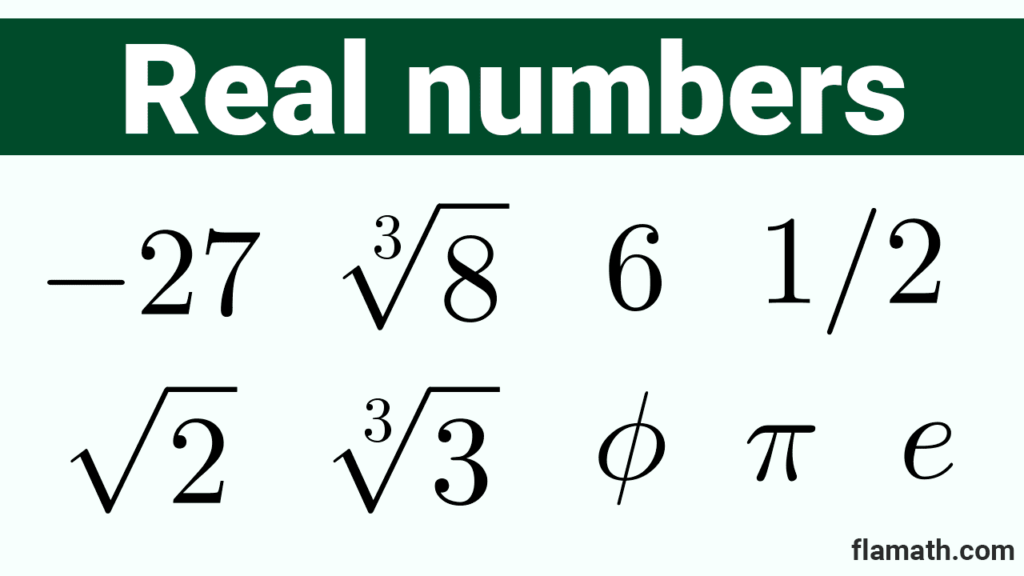


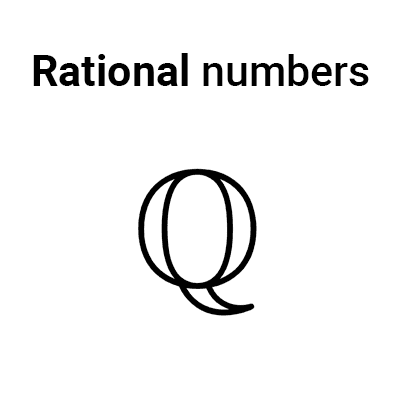
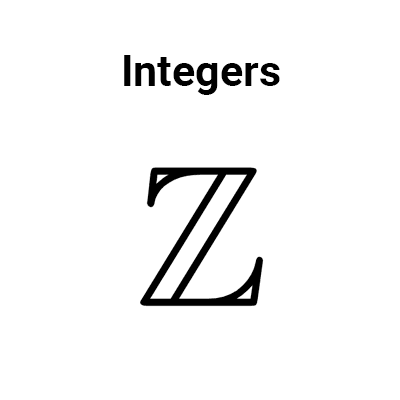
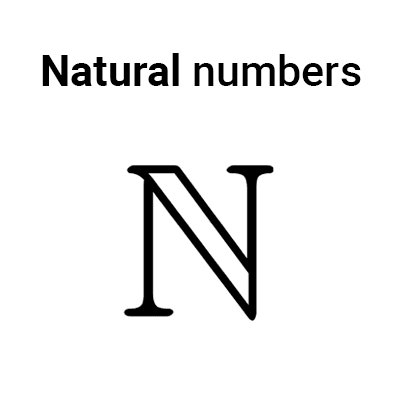
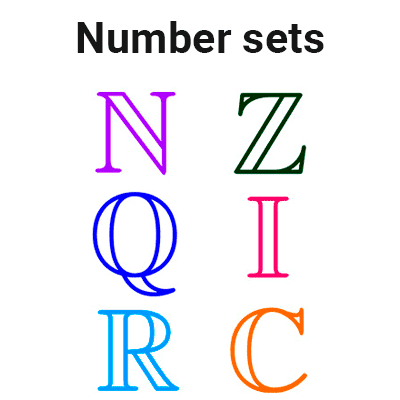
Other articles that may interest you